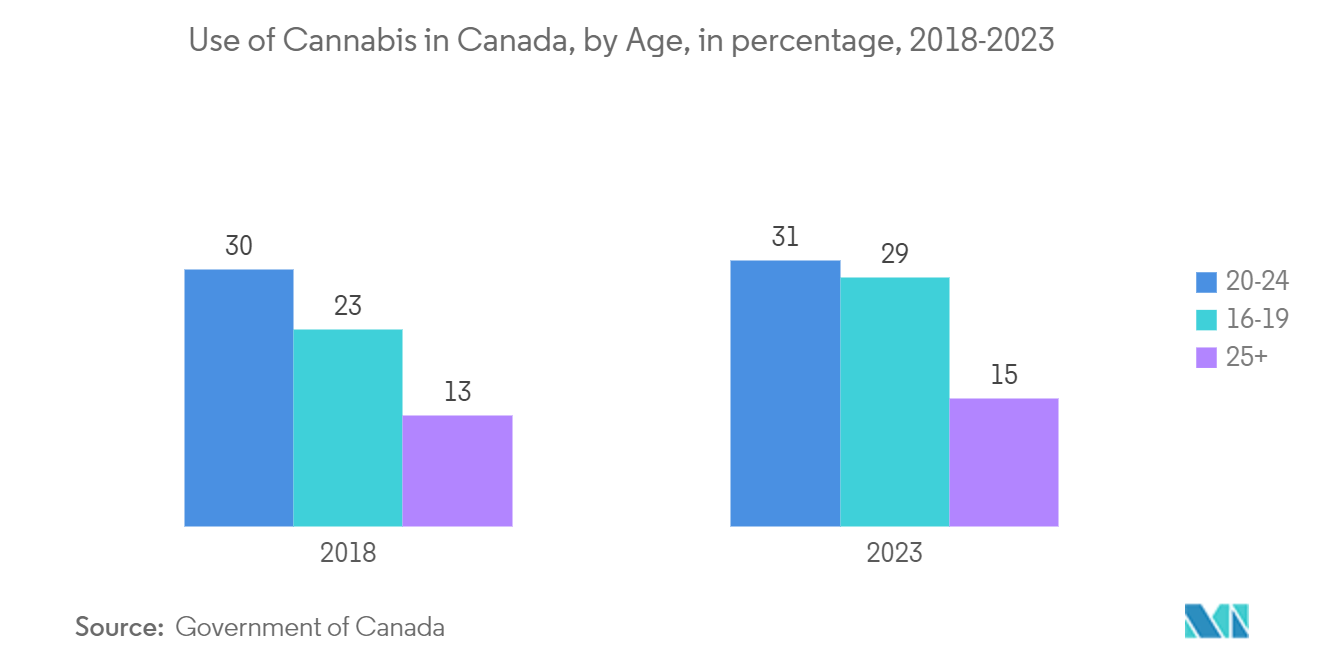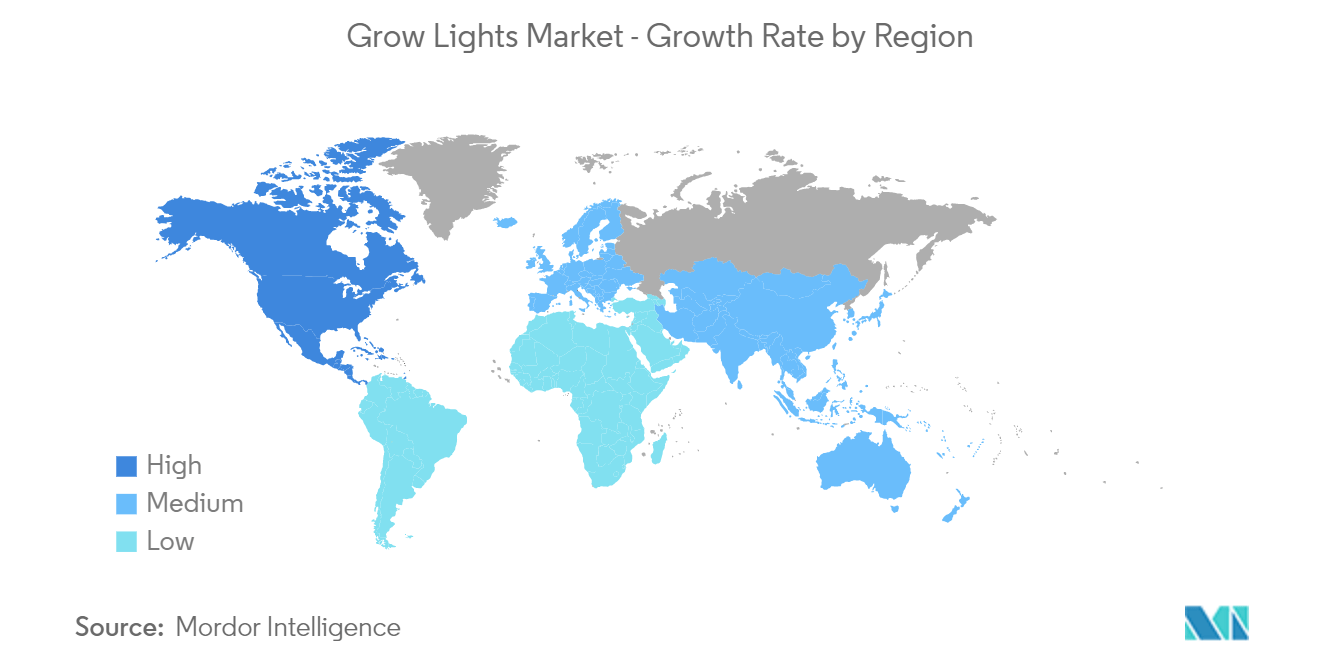Market Trends of Grow Lights Industry
Legalization of Cannabis in Different Countries is Expected to Drive the Market
- The legalization of cannabis cultivation has also resulted in an increased requirement for vertical farms and greenhouses, further boosting the demand for LED-based grow lights. Cannabis grown under a sunless medium needs to have various factors considered.
- For instance, the heat emitted from HPS lights can damage the product. Hence, LEDs, which run at much lower temperatures, can solve the excessive heat emitted.
- Companies growing cannabis through vertical farming have observed significant results in terms of productivity. For instance, MedMen Cannabis Vertical Farm (US) deployed LED systems offered by Fluence Bioengineering (US), a horticulture lighting company owned by OSRAM, which resulted in reduced production time, lower cost per pound of the finished product, decreased energy consumption, and reduced heating, ventilation, and air conditioning (HVAC) load.
- According to Cannabis Business Times, around 46% of cannabis cultivators in the United States registered their growing sites/facilities in the West. 15% reported locations in the Northeast, and only 9% reported cannabis growing operations in Canada.
- Further, Federal United States law prohibits the cultivation, sale, and use of cannabis. But 18 states, including California and the national capital Washington DC, have all legalized cannabis for recreational use in a big-bang legislative shift over the past decade. In October 2022, President Joe Biden pardoned thousands of Americans convicted of cannabis possession. These legalization and government support further drive the studied market.

Europe is Expected to Witness Significant Growth
- The European region is expected to drive the demand for these lighting solutions during the forecast period. The region has used grow light systems for the past decade in multiple controlled environment agriculture (CEA) needs, such as greenhouses, vertical farming, and indoor farming.
- The usage of LED grow lights for horticulture purposes is also increasing, especially in metropolitan areas. For instance, during the pandemic, Osram GmbH, a prominent high-tech company, unveiled its new generation of LED lighting for the horticulture sector. The OslonSquare Hyper Red, which the company also describes as the most efficient LED for horticulture lighting, is currently available in the market and offers a wavelength of 660 nm.
- Moreover, the market is also witnessing multiple infrastructural schemes by vendors. This is expected to increase the demand for grow lights during the forecast period. For instance, Bayer opened a new, automated greenhouse facility in Marana, Arizona. The USD 100 million worth of facility will primarily serve as a global product design center for corn, and the only crop is grown in that facility. The number of technological advancements in an advanced greenhouse facility is numerous, but one facet that remains a core area of innovation for indoor growing systems is lighting.
- Furthermore, Signify launched its latest GreenPowerLED top lighting compact production module. The module is designed for a vertical growth system and can be used as a new solution or in existing installations. The company also established that the new GreenPowerLED module is optimized for closed, climate-controlled cultivation facilities, such as urban vertical farms, and propagation and research centers that primarily use multilayer growth systems to grow crops, such as lettuce and other leafy greens, soft fruits, herbs, and young plants.


